In part one of our interview with the highly creative Pippa Andrews, she told us how she uses textile techniques to make structures and unusual textile art derived from organic and architectural forms, most of which are 3-dimensional.
Here we delve deeper into the process and inspiration behind one of her most captivating pieces and she tells us why being part of the Material Space Group is so important to her development as an artist.
Inspiration
Textile Artist: What currently inspires you and which other artists do you admire and why?
Pippa Andrews: Oh, so many things inspire me! What I see around me, both urban cityscapes – structures – buildings, bridges – and organic forms. When I’m not in a city it’s not big landscapes but small things like flowers seed heads and pods that attract me. I have favourite buildings in the City of London such as Richard Rogers office building at 88 Wood Street for its bright yellow and grey structural details within the glazed curtain wall and Nicholas Grimshaw’s Lloyds TSB HQ on Gresham St with its slate cladding (fixed as if with cross stitch). I’m also inspired by the work of Thomas Heatherwick whose studio puts such an individual spin on buildings, bridges and sculptures.
Foremost among the artists who inspire me is Hiroyuki Shindo for his wonderful development of indigo cloth and shibori patterning for both art installations and practical use, whose village studio in the village of Miyama I was privileged to visit when in Japan. Other Japanese artists I admire include installation artists Michiko Kawarabayashi and Machiko Agano who create light, airy structures to fill huge spaces; the weaver, Jun Tomita, who makes restrained abstracts of great beauty; Reiko Sudo of the Nuno corporation for her innovative use of both cutting edge and old technology to make fabrics and Tetsuo Fujimoto’s who achieves wonderful textures with just a simple zigzag machine stitch. The Western artists I admire include Eva Hesse; Nel Linssen for her paper folded jewellery; Marian Bijlenga who amasses so many separate elements in each work and Dionne Swift for her prints on textiles and paper.
I go to as many exhibitions of fine art and applied art as I can – not just major shows at places like the Tate or the Royal Academy but those in small galleries. I try to visit student degree shows. I read Elle Deco magazine for pattern and colour inspirations. What I see in these often doesn’t directly relate to my work but it energises me.
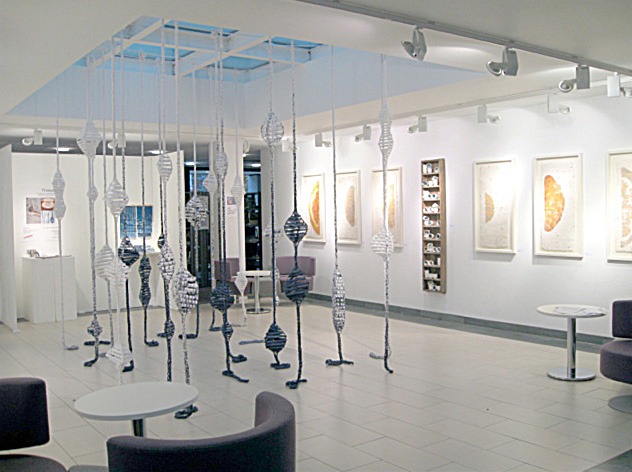
A tribute to Japan
Tell us about a piece of unusual textile art you have fond memories of creating and why?
Shortly after I returned from the study trip to Japan it was time for my degree show and I made an installation of 21 hangings, big enough to walk through and which I’ve also been able to display on three subsequent occasions. They were made of recycled bedsheets sold my local laundry for dust sheets. I screenprinted them with indigo-coloured dye in stripes of varying thickness. Then I tore them into narrow strips which I made into twisted cords and then finger-crocheted into huge ropes, graduating the density of the colour. At intervals along the ropes I threaded tubes which created shapes reminiscent of Japanese lanterns at Shinto shrines. It was a kind of tribute to Japan, and in particular, to Hiroyuki Shindo, which is why it has fond memories for me and reminds my of that wonderful study trip.
Development
How has your work developed since you began and how do you see it evolving in the future?
I seem to be using less and less fabric and stitch. I make textile art at the moment but I can see myself moving in the direction of vessels again perhaps, even other decorative things. I’d love to use my current technique to make a chair seat and back. I have a few chairs with chrome structure, kind of retro, and maybe I could use some elasticised cord threaded with tubes to make a new back and seat for them. I have other ideas for furthering my current technique – a series of small things pinned to a wall, and exploring how other beading stitches can be used for fine art purposes. I want to try using other papers – I really like the newspaper but it is not light fast and never can be – too much acid in it even for anti – UV spray to work. I may print my own papers to which would give me a lot of scope for designing with colour. I am also thinking of combining beading techniques with other techniques such as felting.
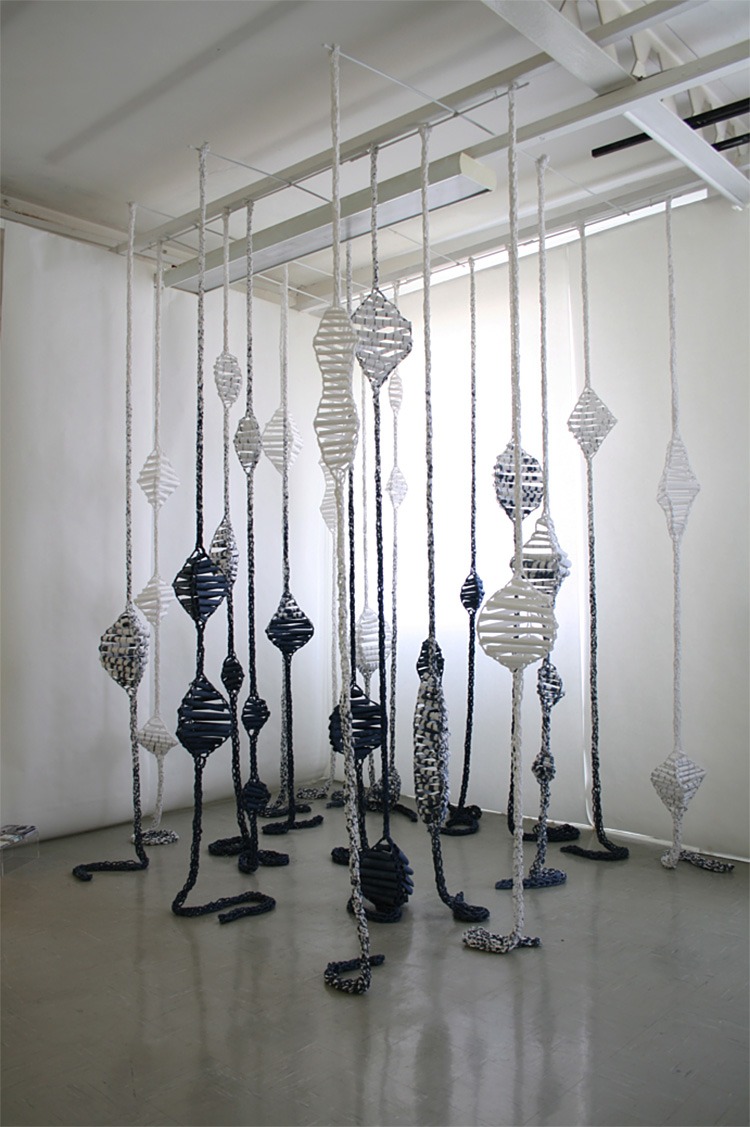
Advice and encouragement
Tell us a bit about the Material Space Group. How did you become involved? What are the plans for the future? Are you a member of other groups?
Material Space is a group of four artists (including TextileArtist.org interviewee Barbara Cotterell) who did the Diploma in Stitched Textiles at East Berks College with Jan Beaney, Jean Littlejohn and Louise Baldwin. When we finished in 2005 we decided we wanted to go further and our credits were accepted by other universities where we completed our degrees. When we graduated we formed Material Space. We all make abstract, often three dimensional work. We spend a day together about four times a year to discuss our current work for mutual advice and encouragement. At least one of our meetings each year will include a visit to an exhibition, for example this year we went to Birmingham to Lost in Lace. It’s really interesting to go round an exhibition together and hear one another’s opinions. We try to put on an exhibition every couple of years and as they get nearer our meetings become planning meetings.
As well as Material Space, I belong to Beyond the Green, a group based in Wiltshire which grew from the City and Guilds classes we attended in Calne. Our latest exhibition has just taken place (Oct/Nov 2012) at Malmsbury Town Hall gallery. This group meets every month for a day of making and mutual support. I usually also exhibit annually in Bath at Bear Flat Open Studios in late May.
Do you give talks or run workshops or classes? If so where can readers find information about these?
I haven’t so far. If I were to do it, I think a question and answer session would be the most suitable format. It is a very easy technique that I use which could probably be taught in an hour or two though a beading instruction book is probably all that is really needed.
What advice would you give to an aspiring textile artist?
Go to exhibitions. Read Embroidery and Crafts magazines. Visit Japan if you get the chance. Keep a notebook to use for rough ideas, notes of what you’ve seen and where, colour studies, photos and technical details of what you are currently making. Put your work on a website. Form or join a support group.
How do you go about choosing where to show your work?
For me, good lighting is paramount as it creates shadows which my work needs to be seen at its best. Space for 3d work to be shown is vital, which may mean space for plinths and the ability to hang from above, not just from walls. If the exhibition is to last a long time, then we prefer a venue that does not need to be permanently stewarded by the artists.
Where can readers see your work in the near future?
Bear Flat open studios in May 2013, Bradford on Avon in May 2014.
For more info please visit:
Let us know us know if you’ve enjoyed this interview by leaving a comment below.
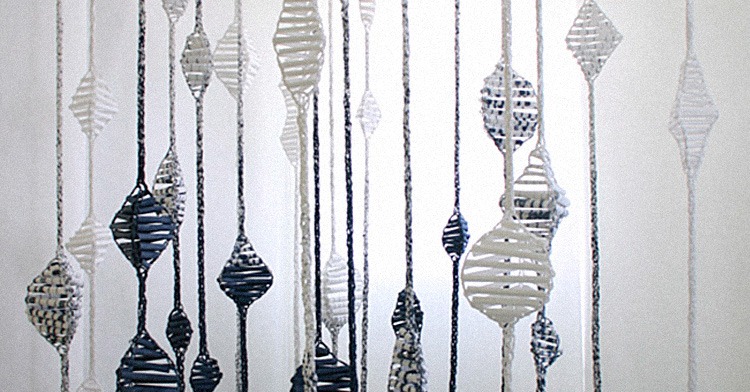

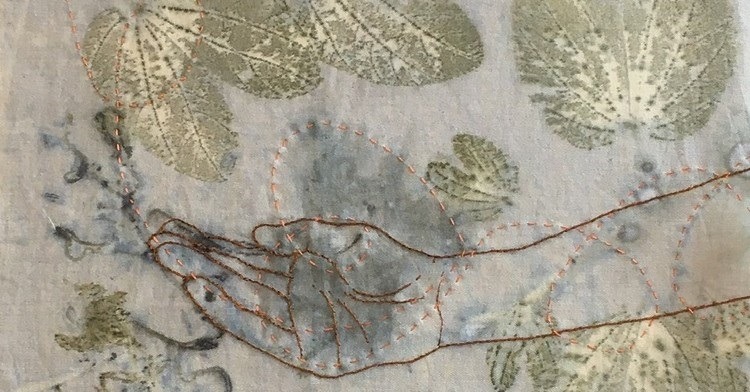
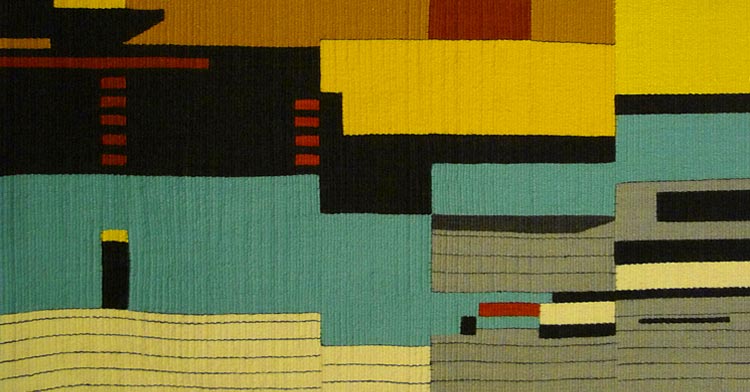
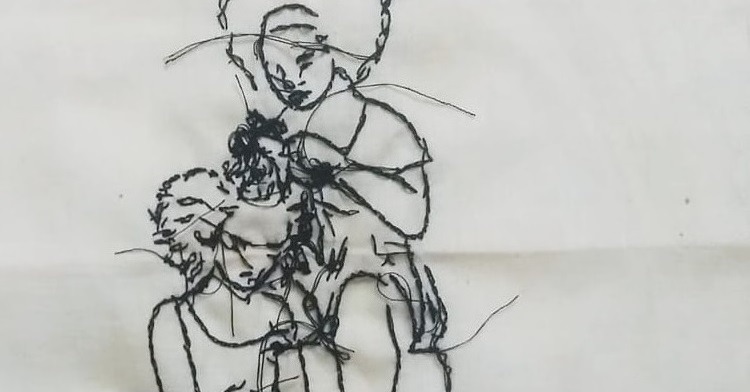
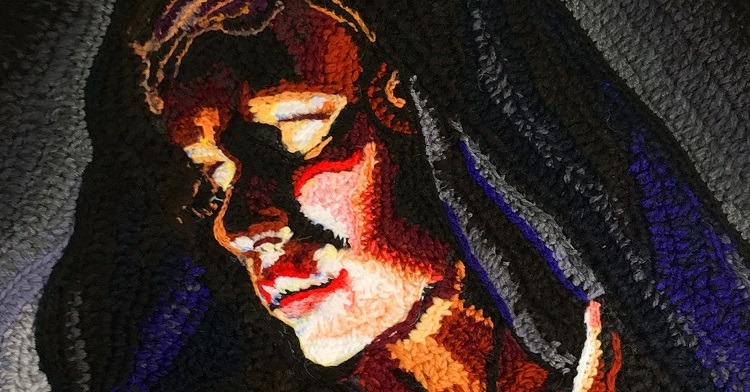
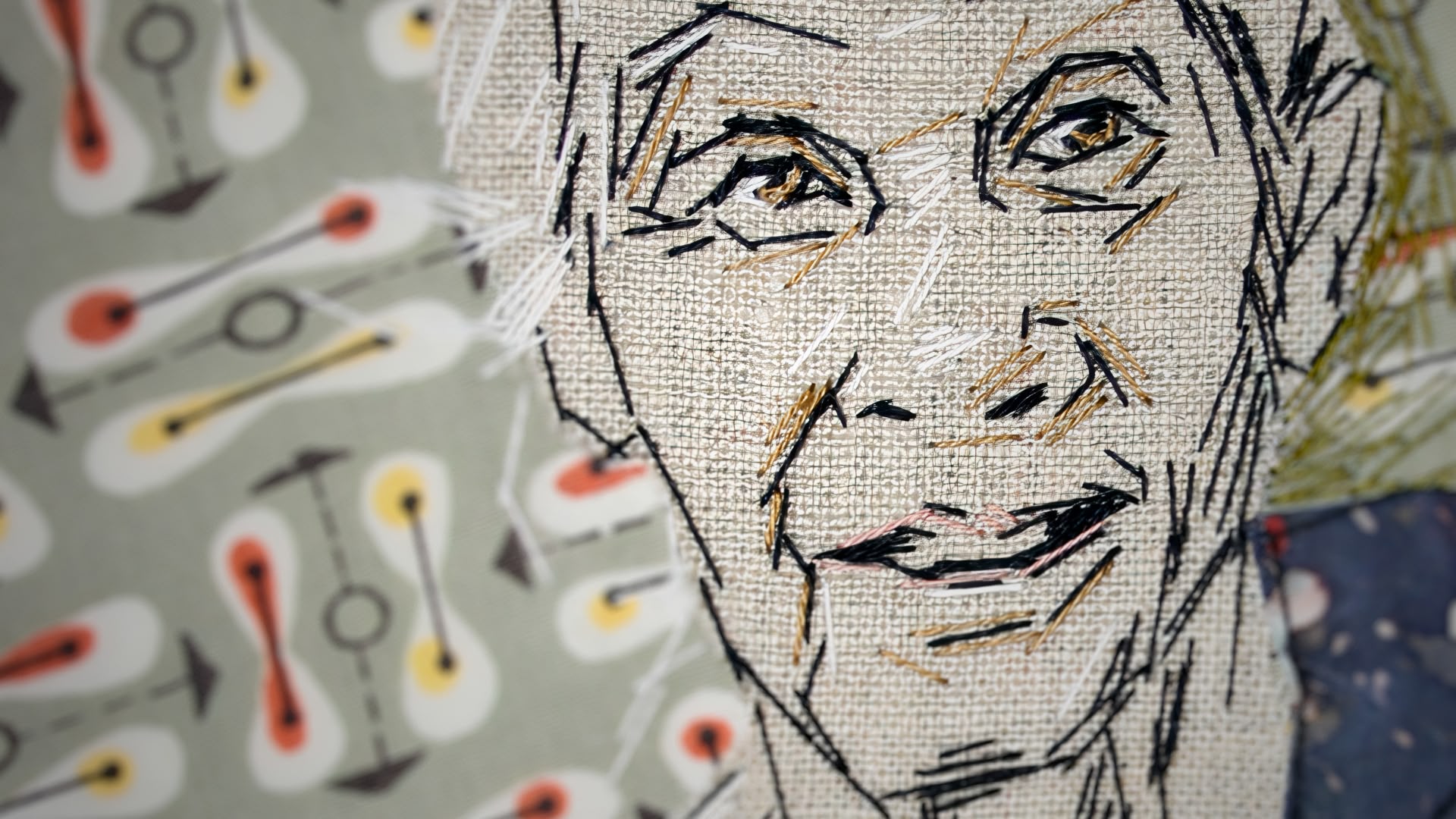
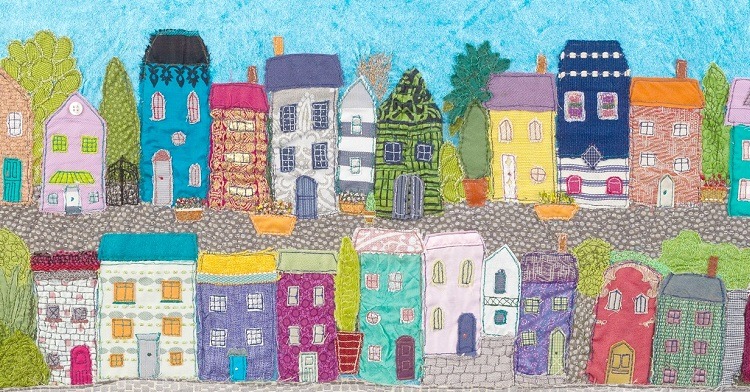
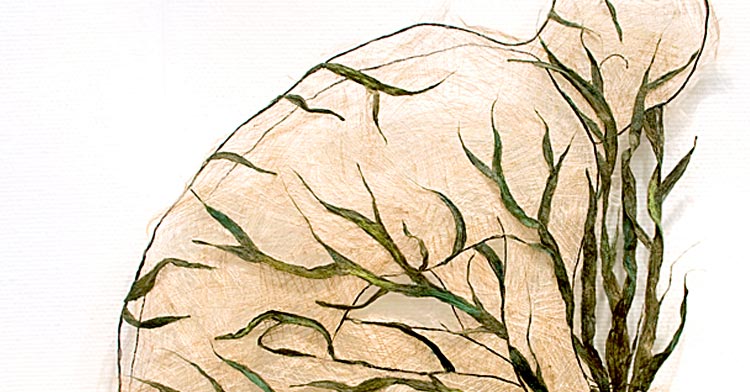
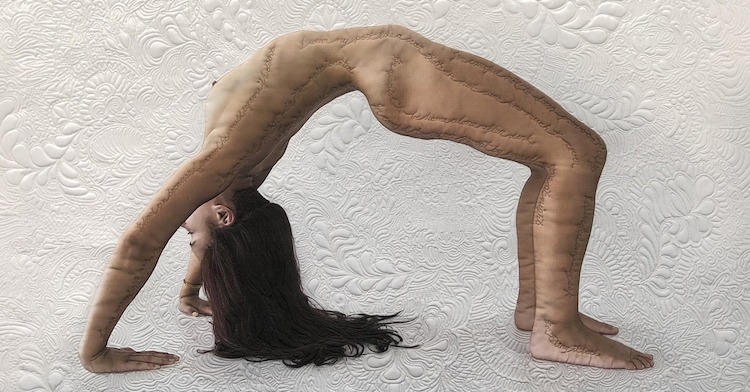
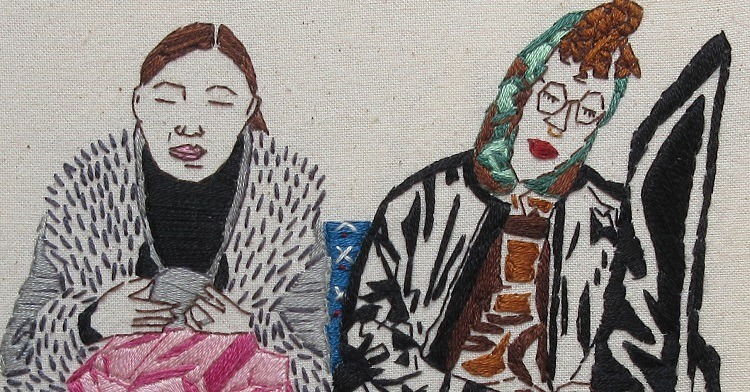
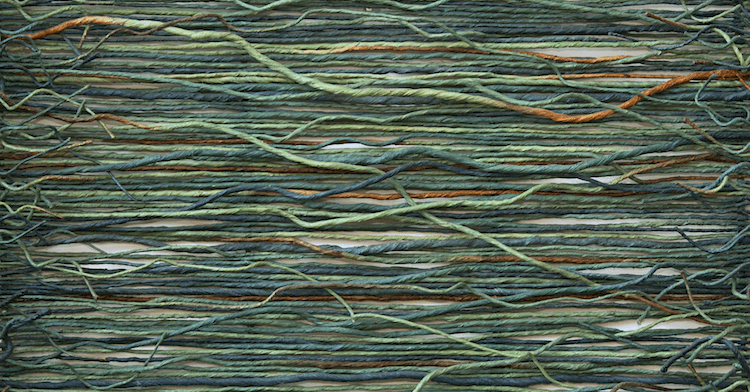
Comments